Leica CL Film Rangefinder Camera
"Leica CL: The Compact Leica film camera of 1973"
By: Thorsten Overgaard. November 23, 2022. Updated February 2, 2024.
Add to Flipboard Magazine.
The original Leica CL film camera was introduced in 1973 as a compact and economical Leica M. In just three years Leica sold 65,000 of them, made by Minolta to a Wetzlar design and incorporated such new features as flash hot shoe, vertical focal plane shutter curtain, easier film loading from the back, and TTL light metering (Through The Lens).
When introduced, some said it was too light, too small, too flimsy, but the lenses are and were superb and can still be used on any Leica film camera or modern digital Leica M. With the rebirth of film enthusiasm, the Leica CL is a compact and fairly economical alternative. It's the ideal hipster camera.
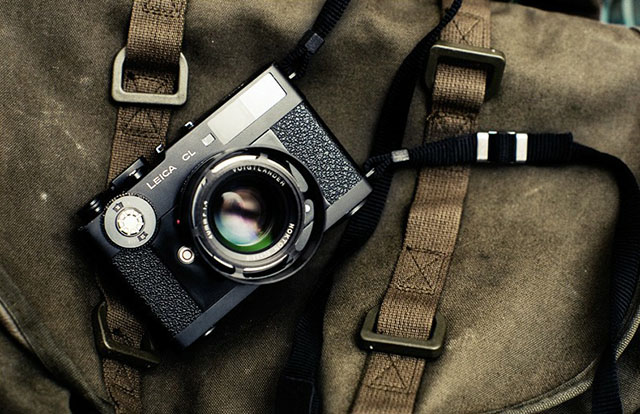
The Leica CL 35mm film camera was made as the Leica CL and the Minolta CLE and shared technology. It also introduced three CL lenses together with it, as a compact and economical alternative to the Leica M camera. It was developed as "E530 Compact" internally.
Made as a Leica CL and a Minolta CLE
The Leica CL was also made as a Minolta CLE (with the E in CLE for Electronic). Identical camera, same team producing it.
The idea was the Leica M rangefinder camera that so far had been the king of the rangefinder market and the chosen tool of any serious photojournalist. But then things changed. The SLR (Single Lens Reflex) camera became popular and Leica didn't really know on what leg to stand.

Leitz Minolta CL camera with the Minolta edition lenses, here the 40mm Minolta M-Rokkor f/2.0. Photo by James Tocchioc.
The corporation with Minolta was one answer to how to modernize everything: A less expensive Leica as entry point for new photographers. Leica had the lenses and mechanical expertise down to perfection, Minolta has the electronic knowhow and a more mass-production view on things. In short, Leica trained Minolta people in mechanical perfection and lens design, and Minolta contributed the electronics.
Minolta and Leica did other corporations with the Leica R3 (1976) and Leica R4/Minolta SD-7 (1980) film cameras that was the Leica editions of modern SLR cameras.
Overall the corporation was not an economical salvation for Leica, Minolta learned a lot from it, and in the early 1980's the Leitz family sold the remaining stock in Leica and soon after the Leica camera production was separated from the other activities at the Leitz campus in Wetzlar Germany. Different story, which you can read about in detail in my Leica History page. And also how Leica returned as a strong brand in the 2000's.
Leica CL: A hipster camera 1973
This is how simple it could be done. Half the weight of a traditional Leica M, much smaller and cost less. Does the same with the excellent 40mm Summicron-C lens (or any other Leica M lens).
Film loading from the back (rather than the bottom), and the second Leica camera to implement a light meter (Leica M5 was the first). And, note that the strap lugs are sitting on one side so that the camera hangs vertical on the chest.

Front and back of the 1973 Leica CL film camera.

Advertisement:
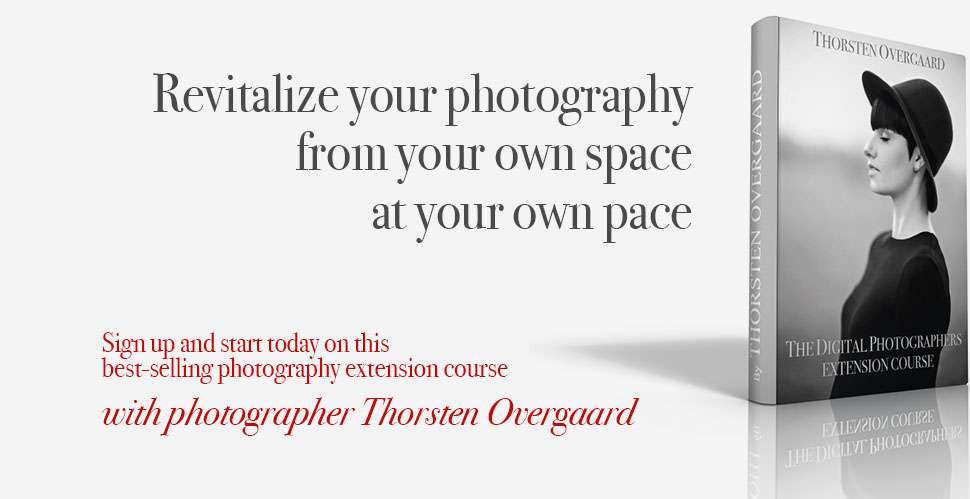

The Leica CL returns in 2017 - and disappears in 2022
In November 2017, the Leica CL came back as a compact version of the digital Leica SL (2015) so to say: A compact digital camera that took both the Leica T made for the other compact Leica TL2 lenses and the Leica L lenses made for the Leica SL, but with an APS-C sensor that is smaller than the full-frame sensor used in most Leica digital cameras.
However, the use of APS-C sensors was also the reason that Leica killed the Leica CL and the Leica TL2 system cameras in 2022: In the future they will focus on full-frame sensor cameras only.
Read my review and video report on the Leica CL here.
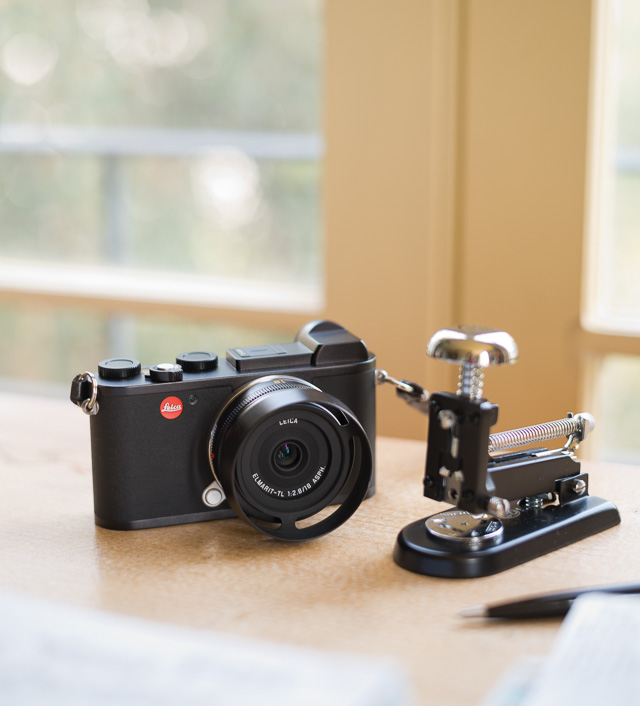 The digital Leica CL (2017) with Leica 18mm Elmarit-TL f/2.8 on my desk. A charming camera that got a lot of love from many new and old Leica users. © Thorsten Overgaard. The digital Leica CL (2017) with Leica 18mm Elmarit-TL f/2.8 on my desk. A charming camera that got a lot of love from many new and old Leica users. © Thorsten Overgaard.
Buying a Leica CL film camera
The Leica CL film camera is available second-hand in the range $500 - $800 as body only, and typically $900 and up with one of more lens.
The ciritical part is usually the light meter that can have "faded".
The camera of course can be used fully manually, meaning using an external light meter, and any Leica M mount lens will fit onto it.
 A Leica M9 with the Leica 40mm Summicron-C f/2.0 with the E39 Ventilated Shade designed by Thorsten Overgaard. A Leica M9 with the Leica 40mm Summicron-C f/2.0 with the E39 Ventilated Shade designed by Thorsten Overgaard.
Using the Leica CL lenses on Leica M cameras
The Leica CL lenses are fairly economical lenses and fits on Leica M cameras, even the most recent digital Leica M11 (2022).
There is the Leica 40mm Summicron-C f/2.0 (usually $500 to $900) and the Leica 90mm Elmar-C f/4.0 lens (usually $250 - $500).

Raven and David Campbell. Leica M9 with Leica 40mm Summicron-C f/2.0. © Thorsten Overgaard.
| |
|
|
|
| |
Leica CL specifications |
|
|
| |
By Thorsten von Overgaard |
|
| |
|
|
|
Produced 1973-1975.
Serial numbers: 1300001 - 1440000.l
Weight: 365g (about half the weight of a Leica M).
121 x 76 x 32 mm body.
Full-frame 24x36mm film camera.
Frame lines 40/50 and 90mm.
Finder magnification 0.6x.
Leica M mount.
Shutter speeds from 1/2 sec to 1/1000 sec.
Built-in TTL light metering.
Light meter ISO 6 to 3200 ISO.
Flash 1/60 second.
Special editions: 50th anniversary "Leica CL 50 Jahre" (1975).
| |
|
|
|
|
|
|
| |
Leica M models chronological overview |
|
| |
By Thorsten Overgaard |
|
|
|
|
|
| |
|
|
|
|
|
|
| |
Further resources |
|
|
|
|
|
| |
Leica Camera Compendium by Thorsten Overgaard |
|
|
|
| |
Leica Lens Compendium by Thorsten Overgaard |
|
|
|
| |
Leica History by Thorsten Overgaard |
|
|
|
| |
 |
|
| |
Film cameras
Leica screw mount |
|
Film cameras
Leica M mount |
|
Digital cameras
Leica M mount
|
|
 |
| |
Leica I (1925-1952) |
|
|
|
|
|
 |
| |
Leica II (1932-1951) |
|
|
|
|
|
 |
| |
Leica Standard (1932-1950) |
|
|
|
|
|
 |
| |
Leica 250 (1933-1943) |
|
|
|
|
|
 |
| |
Leica III (1933-1939) |
|
|
|
|
|
 |
| |
Leica IIIa (1935-1948) |
|
|
|
|
|
 |
| |
Leica IIIb (1938-1941) |
|
|
|
|
|
 |
| |
Leica IIIc (1940-1951) |
|
|
|
|
|
 |
| |
Leica IIId (1940-1947) |
|
|
|
|
|
 |
| |
Leica IIIf (1950-1957) |
|
|
|
|
|
 |
| |
Leica IIIg (1957-1960) |
|
|
|
|
|
 |
| |
Leica Ig (1957-1963) |
|
|
|
|
|
 |
| |
|
|
Leica M3 (1954-1966) |
|
|
|
 |
| |
|
|
Leica MP (1956-1957) |
|
|
|
 |
| |
|
|
Leica M2 (1958-1967) |
|
|
|
 |
| |
|
|
Leica M1 (1959-1964) |
|
|
|
 |
| |
|
|
Leica MD (1963-1966) |
|
|
|
 |
| |
|
|
Leica MDA (1966-1976) |
|
|
|
 |
| |
|
|
Leica M4 (1966-1975) |
|
|
|
 |
| |
|
|
Leica M5 (1971-1975) |
|
|
|
 |
| |
|
|
Leica CL/Minolta CLE (1973-1976) |
|
|
|
 |
| |
|
|
Leica M4-2 (1977-1980) |
|
|
|
 |
| |
|
|
Leica M4-P (1980-1986) |
|
|
|
 |
| |
|
|
Leica M6 "Classic" (1984-1998)
|
|
|
|
 |
| |
|
|
Leica M6J (1994) |
|
|
|
 |
| |
|
|
Leica M6 "TTL" (1998-2002)
|
|
|
|
 |
| |
|
|
Leica M7 (2002-2018) |
|
|
|
 |
| |
|
|
Leica MP (2003-) |
|
|
|
 |
| |
|
|
|
|
Leica M8 (2006-2009) |
|
 |
| |
|
|
|
|
Leica M9 (2009-2012) |
|
 |
| |
|
|
|
|
Leica M9-P (211-2014) |
|
 |
| |
|
|
|
|
Leica Monochrom (2012-2015) |
|
 |
| |
|
|
|
|
Leica M 240 (2014-2015) |
|
 |
| |
|
|
|
|
Leica M-E (2012-2016) |
|
 |
| |
|
|
Leica M-A (2014 - |
|
Leica M-P 240 (2014-2017) |
|
 |
| |
|
|
|
|
Leica M246 (2015-2019) |
|
 |
| |
|
|
|
|
Leica M-D 262 (2016-2017) |
|
 |
| |
|
|
|
|
Leica M10 (2017-2022) |
|
 |
| |
|
|
|
|
Leica M10-P (2018-2021) |
|
 |
| |
|
|
|
|
Leica M10-D(2018-2022) |
|
 |
| |
|
|
|
|
Leica M10 Monochrom (2020-) |
|
 |
| |
|
|
|
|
Leica M10-R (2020-2022) |
|
 |
| |
|
|
Leica M6 "Reissue" (2022) |
|
Leica M11 (2022 -) |
|
 |
| |
|
|
|
|
|
|
 |
| |
|
|
|
|
|
|
 |
The Leica M family tree
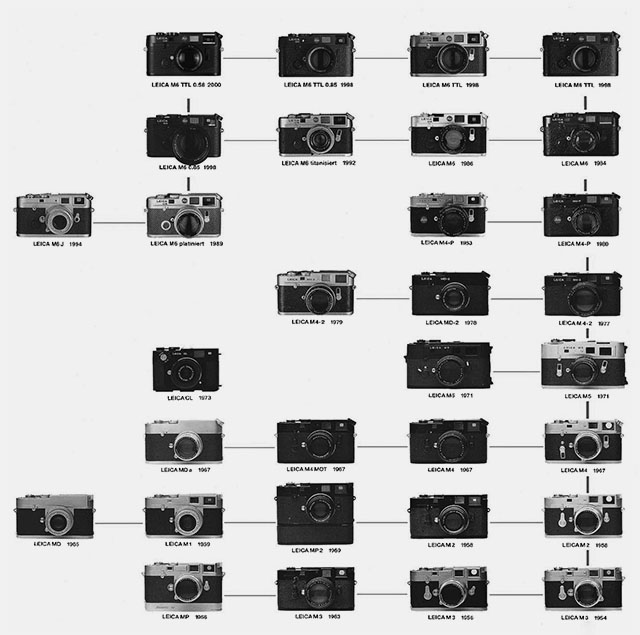
The Leica M family tree from 1954 to 2002.
| |
|
|
| |
Why is it called a "camera"..?
The word Camera is today's short name for Camera Obscura (which originally means “a dark room”).
Origin of the word Obscura means "dark" or "covered", and the word Camera means Chambre and was used originally only as a Latin or alien word, actually only for Spanish soldiers' rooms, until popularized in connection with photography in 1727: “Camera Obscura”.
In 1793 the slang term “camera” was used by Sterne Tr. Shandy: “Will make drawings of you in the camera” and by Foster (1878), “The eye is a camera”.
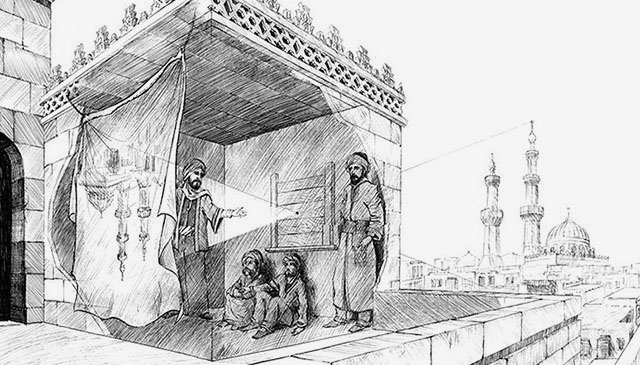
Ibn-al-Haytham mentioned Camera Obscura in his "Book of Optics" in 1021.
The concept of Camera Obscura was described by Iraqi scientist Ibn-al-Haytham in his book, “Book of Optics” (1021) and by Leonardo da Vinci in 1500; popularized and made widely known in 1589 by Baptista Porta when he mentioned the principle in his book “Natural Magic”. Johannes Kepler mentions Camera Obscura in 1604.
Camera = chambre (room), Obscura = dark (or cover). |
|
| |
|
|

/Thorsten Overgaard. Latest update November 23, 2022. Job #2168-1122
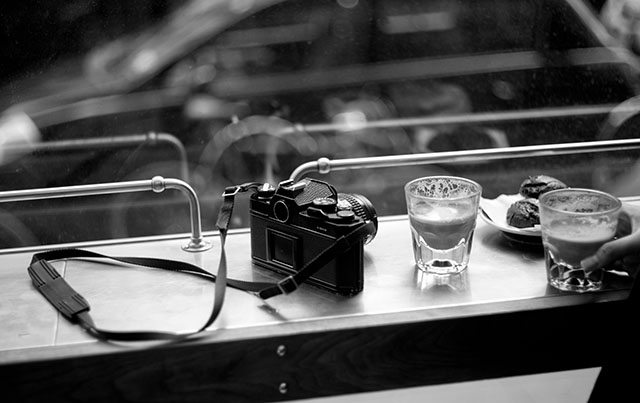
Leica 50mm Noctilux-M ASPH f/0.95. © Thorsten Overgaard.

| |
NEW VERSION 22.3 |
|
| |
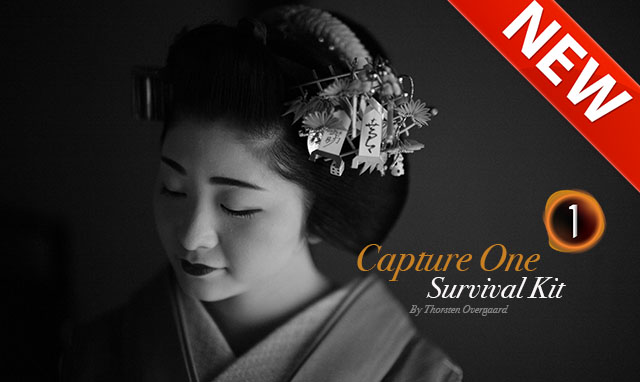 |
|
| |
|
|
|
|
| |
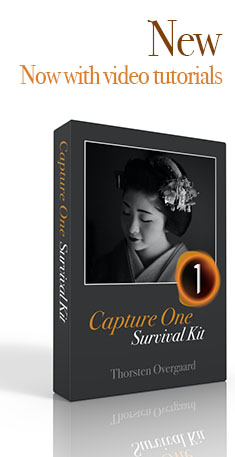
490 pages easy-to-understand
workflow logics, checklists, Styles
and 3+ hours of videos.
Packed with help and tools for all questions on digital photography workflow.
Read more ...
Buy now
Start today
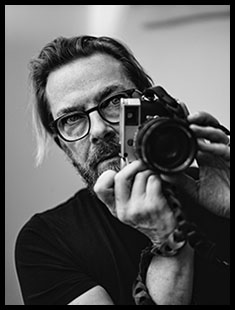
Thorsten Overgaard
Black and White Photography
Editing Color Photographs
Special Effects
Organizing files
Organizing Old Archives
Keywords
How to do safe backup
Hardware setup
Screens and Calibration
Printing Workflow
Capture One on iPad
Capture One Live
Publishing
+ Export Formats
+ Free Overgaard Styles
+ Preflight Checklists
The one and only method
The Survivel Kit is the only of it's kind, made by photographers for photographers.
|
|
The Brand New June 2022
"Capture One Survival Kit 22"
By Thorsten Overgaard
The complete workflow of Thorsten Overgaard,
made easy with pre-flight checklists and step-by-step instructions on how to set up and use a professional
photo editing software like Capture One Pro.
Laid out in a way that is easy to understand
and everyone can apply. Works for Capture One Pro 22
and all previous versions.
New revised version
This is the most revised version ever of the
best-selling Surival Kit by Thorsten Overgaard. This new
version includes many new chapters, on Capture One on iPad and how to add keywords better, as well as more
than 3+ hours of videos tutorials with
Thorsten Overgaard.
Simple and to-the-point tools on how to use select tools, how to do backup and how to manage and organize pictures archives so they don't get lost and doesn't have to be reorganized again and again.
Expanded and simplified
Also: Specialized first-help chapters on how to
sync your entire photo archive with the smartphone,
how to escape Apple Photos, how to empty photos out
of an iPhone, how to get out of Lightroom CC, what to do with iPad editing ... and more on how to not survive the digital age and perhaps even outsmart it.
Now comes with
Overgaard Leica Styles for FREE
Special black & white conversion, better skintones
and a CMOS sensor color correction.
(Value $48.00. FREE with this kit).
Thorsten Overgaard
Capture One Survival Kit 22.3
For computer, iPad, smartphone and Kindle.
Buy Now
Instant download.
Price $798.00
100% satisfaction or money back.
Released June, 2022.
UPDATE
VERSION 22.3 UPDATE
Compatible with all previous versions.
Simply use code: "UPDATE22"
Only $298,00

|
|
|
| |
|
|
|
|
| |
#2131-1222-3 |
|
|
|
Index of Thorsten von Overgaard's user review pages covering Leica M9, Leica M9-P, M-E, Leica M10,
Leica M 240, Leica M-D 262, Leica M Monochrom, M 246 as well as Leica Q and Leica SL:

|
![]()
